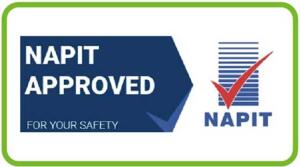How to Complete an EICR in the UK: A Comprehensive Guide
Electrical Installation Condition Reports (EICRs) are vital for ensuring electrical safety in homes, commercial spaces, and public buildings across the UK. This guide walks you through the entire process of completing an EICR, what to look for, the classifications of electrical issues (C1, C2, C3, and FI), and the benefits of conducting an EICR. Whether you’re a qualified electrician or a property owner interested in understanding the process, this article covers it all.
What is an EICR?
An Electrical Installation Condition Report is an inspection and testing process carried out to assess the safety and functionality of an electrical installation. It identifies faults, wear and tear, and areas of non-compliance with current safety standards, such as the BS 7671 Wiring Regulations. EICRs are required periodically, typically every 5 years for rental properties and every 10 years for owner-occupied homes.
Steps to Complete an EICR
Step 1: Preparation and Planning
- Understand the Scope:
- Determine the type of property and its electrical installation size.
- Review existing documentation, such as previous EICRs, electrical drawings, and installation certificates.
- Notify the Occupant:
- Inform tenants or owners about the inspection schedule.
- Advise them to unplug appliances and prepare for potential interruptions to power.
- Assemble Tools and Equipment:
- Insulation resistance tester.
- Continuity tester.
- Multimeter.
- Earth loop impedance tester.
- Labels for identification.
Step 2: Visual Inspection
The first stage of an EICR involves visually inspecting the electrical installation for any obvious signs of damage, wear, or non-compliance. Key things to check include:
- Consumer Unit:
Look for damaged covers, signs of overheating, and whether the unit has an RCD (Residual Current Device) for fault protection. - Cables:
Check for exposed, damaged, or outdated wiring (e.g., VIR or rubber-insulated cables). - Accessories:
Inspect sockets, switches, and light fittings for cracks, burns, or signs of misuse. - Earthing and Bonding:
Confirm that adequate earthing is in place for the installation, such as main earth bonding to gas and water pipes.
Step 3: Electrical Testing
Testing the installation is critical to identifying faults that may not be visible during a visual inspection. Common tests include:
- Continuity of Protective Conductors:
- Check the earth continuity of circuits and ensure no breaks exist in protective conductors.
- Insulation Resistance:
- Measure resistance between live conductors and earth to ensure no degradation in cable insulation.
- Polarity Testing:
- Confirm the correct connection of live, neutral, and earth wires.
- Incorrect polarity can lead to equipment damage or electric shock risks.
- Earth Fault Loop Impedance:
- Test the impedance of the earthing system to ensure that protective devices will trip effectively during a fault.
- RCD Testing:
- Test the Residual Current Device to confirm it trips within the specified time and current limits.
Classification Codes: C1, C2, C3, and FI
When faults or issues are identified during the EICR, they are categorized into four classifications:
C1: Immediate Danger
- A C1 issue poses an immediate risk of injury or fire. Examples include:
- Live exposed wires.
- Overheating cables or accessories.
- Damaged consumer units with live parts accessible.
- Action: These must be rectified immediately, or the installation should be made safe by isolating the circuit.
C2: Potential Danger
- A C2 issue does not pose an immediate risk but could become dangerous if left unresolved. Examples include:
- Inadequate earthing or bonding.
- Damaged sockets or switches.
- Overloaded circuits.
- Action: Rectify as soon as possible. A C2 classification will result in the installation being deemed unsatisfactory.
C3: Improvement Recommended
- A C3 issue indicates that the installation is safe but could benefit from improvement to meet current standards. Examples include:
- Lack of RCD protection on socket outlets.
- Plastic consumer units in domestic properties (in some cases).
- Action: No immediate action is required, but improvements are advised.
FI: Further Investigation
- An FI code means that further investigation is required to determine the safety of the installation. Examples include:
- Inaccessible parts of the installation requiring inspection.
- Test results that indicate an anomaly.
- Action: Investigate promptly to determine whether remedial action is needed.
Documentation
After completing the inspection and testing, compile the findings into the official EICR document. The report should include:
- General Information:
- Property details and client information.
- Description of the installation.
- Date of inspection.
- Observations and Recommendations:
- Details of all C1, C2, C3, and FI issues.
- Schedule of Test Results:
- Circuit details, test results, and any limitations to the inspection.
- Overall Assessment:
- Indicate whether the installation is satisfactory or unsatisfactory.
Benefits of EICRs
1. Enhanced Safety
An EICR identifies potential hazards, reducing the risk of electric shock, fire, or equipment damage.
2. Legal Compliance
- For landlords, regular EICRs are a legal requirement under the Electrical Safety Standards in the Private Rented Sector (England) Regulations 2020.
- Commercial properties must adhere to Health and Safety at Work Regulations 1974.
3. Cost Savings
Addressing minor issues during an EICR prevents costly repairs or replacements in the future.
4. Insurance Compliance
Many insurers require a valid EICR as proof of a safe installation for policy coverage.
5. Energy Efficiency
By identifying outdated or inefficient electrical components, an EICR can help improve energy efficiency.
6. Peace of Mind
Whether you’re a homeowner or a landlord, knowing that your installation is safe provides invaluable peace of mind.
What to Look Out for During an EICR
- Outdated Wiring
- Old wiring types, such as aluminium or rubber-insulated cables, may not meet current safety standards.
- Overloaded Circuits
- Signs of overheating, such as scorch marks around sockets, indicate potential circuit overloading.
- Lack of RCD Protection
- Modern installations require RCD protection for all socket outlets and circuits used outdoors.
- Non-Compliance with BS 7671
- Check for compliance with the latest edition of the Wiring Regulations.
- Visible Damage or Wear
- Cracks, loose connections, or exposed wires are signs of wear and tear.
Conclusion
Conducting an EICR is essential for maintaining electrical safety and compliance in any property. By following a systematic approach that includes preparation, visual inspection, testing, and classification of issues, electricians can ensure installations meet the required standards. The benefits of an EICR extend beyond safety, offering cost savings, legal compliance, and peace of mind.
If you are a property owner, tenant, or landlord, scheduling regular EICRs is an investment in safety and efficiency. Always choose a qualified electrician with expertise in conducting EICRs to get the most accurate and reliable results.
Frequently Asked Questions
1. How often should I get an EICR done?
The frequency depends on the property type. For rented properties, an EICR is legally required every 5 years or at the start of a new tenancy. Owner-occupied homes should have one every 10 years, and commercial properties may require more frequent checks depending on their use and regulations.
2. What happens if my EICR is unsatisfactory?
If the report is deemed unsatisfactory due to C1 or C2 issues, these faults must be rectified promptly to ensure safety. The electrician will provide a quote for remedial work, and once completed, a follow-up check will confirm compliance.
3. Do I need to prepare anything before the EICR?
Yes, ensure that the electrician has access to all electrical installations, such as the consumer unit, sockets, and light fittings. Unplug appliances where possible and clear access to areas like under-stairs cupboards or lofts where electrical components may be located.











